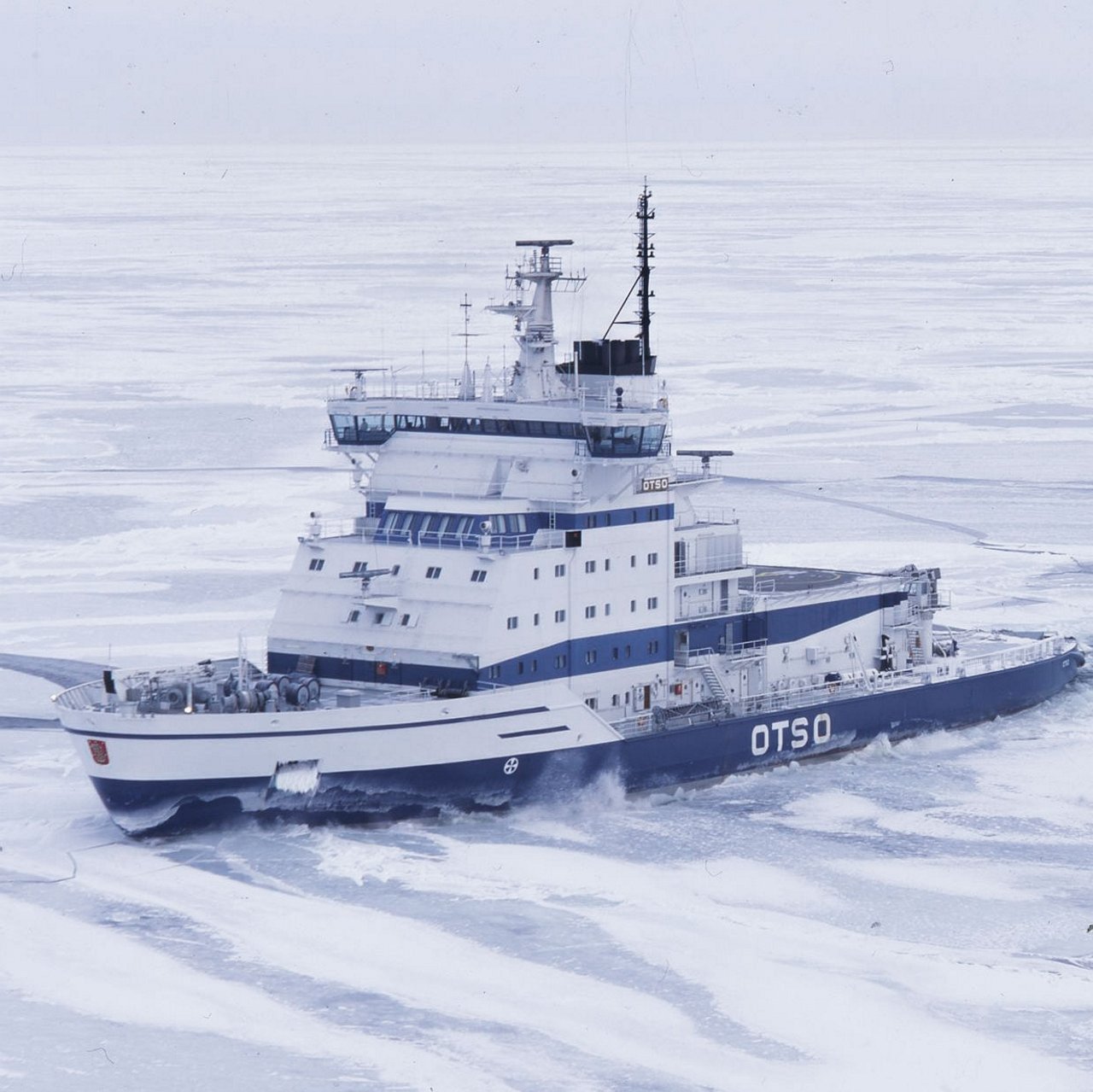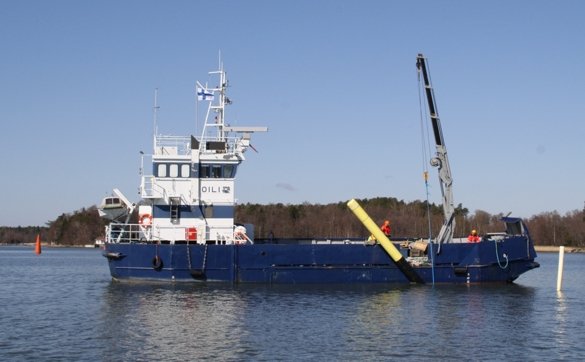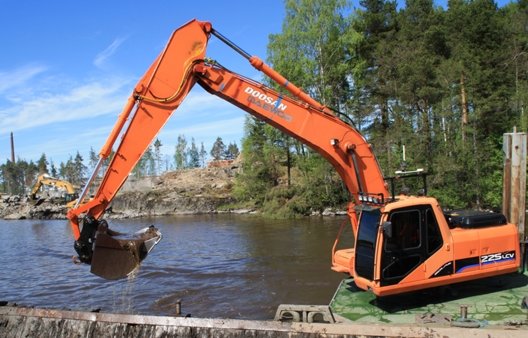
Ice breakers
IB Otso
| Built | 1986 |
| Shipyard | Wärtsilä Helsingin telakka |
| Ice class | 1A Super, PC4 |
| Length | 99 m |
| Beam | 24,2 m |
| Operational draught | 8 m |
| Displacement | 9 222 t |
| GT | 7 189 t |
| NT | 2 157 t |
| Main engines | Wärtsilä 16V32 |
| Propulsion power | 15 MW |
| Speed | 18,5 knots |
| Bollard pull | 160 t |
| Crew | 20 |
| Call Sign | OIRT |
Jäänmurtaja Otso
Otso
The Otso and its sister ship Kontio, launched in 1986 and 1987 respectively, replaced three older icebreakers in the Karhu class (the Karhu, Murtaja and Sampo). Because of their cost-efficiency, the blue-and-white Kontio and Otso are normally the first icebreakers to leave Arctia’s Katajanokka base for deployment in the Bay of Bothnia. In early and late winter, they operate as far north as Tornio, moving southward as the ice conditions change and the Urho and Sisu assume responsibility for icebreaking in the Bay of Bothnia.
The Otso was designed with cost-efficiency in mind. The traditional four thrusters were replaced with an air bubbler system installed in the vessel’s bow. Another new feature was a diesel power plant providing alternating current to all functions, down to the thruster engines. Thanks to its machinery and the design of its hull, the Otso has a lower fuel consumption than older and larger icebreakers.
The tanks for fuel oil are located amidships, as far from the sides of the vessel as possible. This will help minimise the risk of oil spills, should the vessel sustain a gash in the hull as a result of an accident. The Otso’s tanks can hold 1,500 m³ of heavy fuel oil, 340 m³ of diesel oil, and 630 m³ of ballast water for heeling the vessel.
The Otso has four Wärtsilä 16V32 diesel engines, made in Vaasa, with a combined power output of nearly 22 megawatts. Each engine powers a 6,000 V/50 Hz AC generator with a power output of six megawatts. The two rear thrusters are each powered by a dedicated engine, with a shaft power of 2 × 7.5 MW, i.e. 15 megawatts in total.
The shiny band at the waterline of the blue-and-white Otso is a belt made of stainless steel plates, which help to reduce the friction between the hull and the ice. The unpainted belt is two metres in height. Active cathode protection at the junction of steel plates of different chemical composition prevents galvanic corrosion.
Many functions on the Otso can be carried out from the bridge, such as starting, stopping, monitoring the engines and operating the heeling tanks, towing winch and crane, and even hoisting and lowering the flag.
One further innovation was introduced when the Otso was completed – the officers started taking their meals together in the officers’ mess. The previous reform of this kind took place in 1973, when table service on icebreakers was discontinued.
Arctia continues a 130-year-old icebreaking tradition
Arctia continues a 130-year-old icebreaking tradition by deploying one of the strongest icebreaker fleets in the world. The fleet includes five traditional icebreakers: the Voima, Urho, Sisu, Otso and Kontio.
Arctia’s icebreakers are able to maintain their ice-breaking capability under all ice conditions in the Baltic Sea. The ships are equipped with towing forks and winches.




